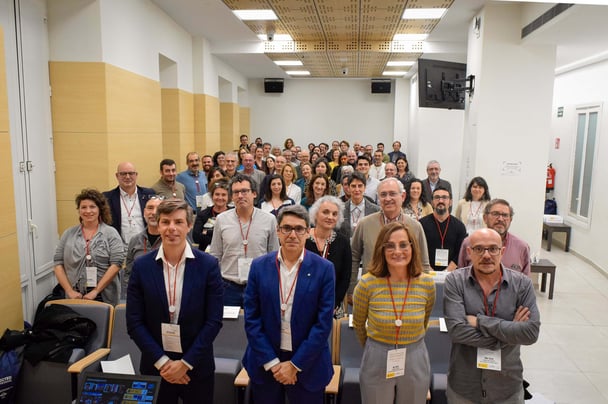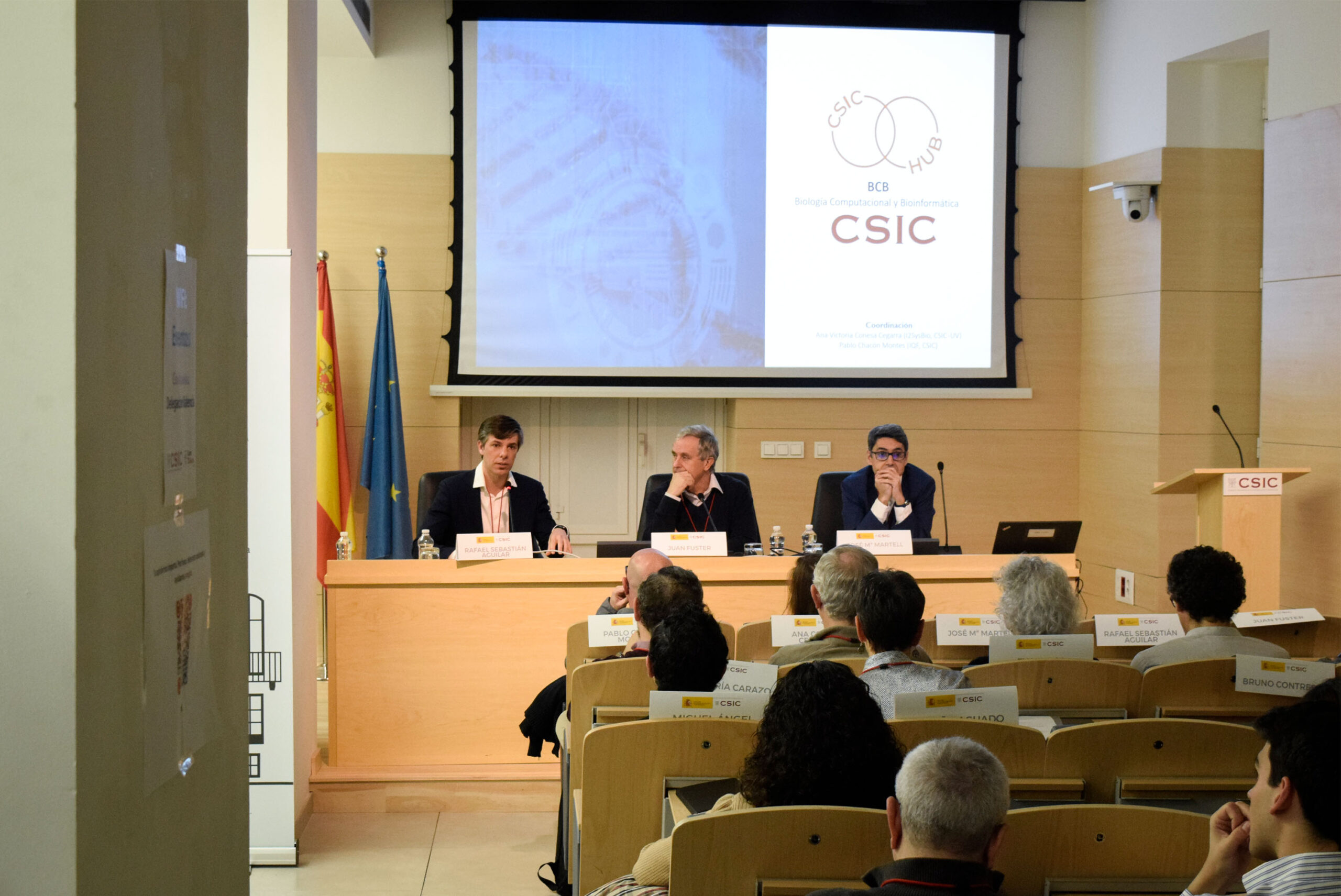The presentation of the initiative brings together more than a hundred scientists from 35 institutions and 60 research groups. These disciplines have led to scientific advances such as the sequencing of the human genome, the study of disease-causing mutations and the discovery of new viruses
The Delegation of the Spanish National Research Council (CSIC) in the Valencian Community, the Science House of Valencia, today hosted the presentation of the CSIC Computational Biology and Bioinformatics Connection, an initiative that organizes the resources of Spain's leading public research organization in these fields. Coordinated from the Institute for Integrative Systems Biology (I2SysBio), located at the University of Valencia Science Park (PCUV), a center of the CSIC and the University of Valencia, this platform will connect people, methods and resources to create an offer that allows the development of strategies of excellence in the handling of big data and supports research in life sciences.
The presentation of the CSIC Computational Biology and Bioinformatics (BCB) Connection was attended by the president of CSIC, Eloísa del Pino; Rafael Sebastián, general director of Science and Research of the Generalitat Valenciana; Chema Martell, vice president of Scientific and Technical Research of CSIC, and Juan Fuster, institutional delegate of CSIC in the Valencian Community. Ana Conesa, CSIC research professor at I2SysBio and coordinator of the BCB Connection, and the deputy coordinator, Pablo Chacón (Institute of Physical Chemistry "Blas Cabrera", IQF-CSIC) introduced to the more than 65 participants what this new CSIC thematic platform consists of.
Computational Biology and Bioinformatics was born in the early 1960s and its growth was linked to the development of Molecular Biology, the discovery of DNA and advances in computing. It is a multidisciplinary field between basic sciences (Biology, Chemistry, Physics and Mathematics) and applied sciences (Computer Science and Statistics). It deals with the storage, processing, analysis and interpretation of massive data from multiple sources (bioimaging, genomics, proteomics, metabolomics...).
“The BCB has a strong transversal character, providing answers to scientific questions in areas such as pharmacology, systems biology, evolution, development, neuroscience, agriculture, nutrition and biotechnology”, Ana Conesa, CSIC research professor at I2SysBio and coordinator of the BCB Connection
"The BCB has a strong transversal character, providing answers to scientific questions in areas such as pharmacology, systems biology, evolution, development, neuroscience, agriculture, nutrition and biotechnology," explains Ana Conesa. "Its broad scope of action has made its use indispensable for CSIC centers and national institutes related to life sciences," continues the platform coordinator.
Thus, in a context marked by the use of massive data, which requires the use of standards, data repositories and open science codes and strategies, and given the difficulty in meeting the great demand for these resources and the dispersion in areas and centers of very diverse subject matter, "the CSIC launches this new thematic platform to have an organized, quality offer in Computational Biology and Bioinformatics with leadership and training capacity," summarizes Conesa.

Improving CSIC's scientific computing
Nearly 100 researchers from more than 60 research groups and 24 service units of the CSIC, as well as two national centers, the National Institute for Agricultural and Food Research and Technology (INIA) and the Spanish Institute of Oceanography of Spain (IEO), are participating. Its members are located in 35 institutions in 10 Autonomous Communities, and work in a wide range of disciplines, from genomics to artificial intelligence. They have developed more than 250 bioinformatics software tools and collaborate with companies in a wide variety of sectors ( pharmaceutical, nutrition, genetics, biotechnology, fertility, etc.), as well as creating their own spin-offs.
Nearly 100 researchers from more than 60 research groups and 24 CSIC service units, 35 institutions present in 10 Autonomous Communities, have developed more than 250 bioinformatics software tools.
"In addition to connecting the CSIC's scientific and technical staff in Computational Biology and Bioinformatics to promote internal and external collaboration, this new connection will create a catalog of resources and methodologies in these areas, connecting and improving the CSIC's scientific computing network," says Pablo Chacón. The aim is to establish an offer for research organizations and companies based on CSIC R+D+i in this field. Other objectives are to promote training, visibility and excellence in Computational Biology and Bioinformatics carried out by the organization.
This is the sixth of the CSIC Connections (CSIC-HUBs) launched by the institution, after those dedicated to Archeology, Cancer, Life Sciences, Nanomedicine and Artificial Intelligence. Based on the CSIC White Papers, where the organization defines its priorities and research needs to respond to various challenges in the coming decades, these connections are scientific-technical collaboration networks that seek to establish a link, sustainable in the medium and long term, between research staff from different centers around priority topics, so that they can share information and knowledge, as well as carry out joint activities that include the exchange of research staff.
More information
https://www.csic.es/es/investigacion/conexiones-csic-y-libros-blancos-desafios-2030/conexiones-csic


